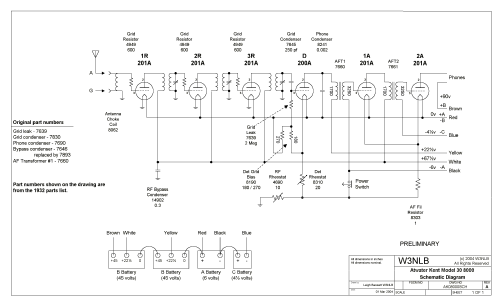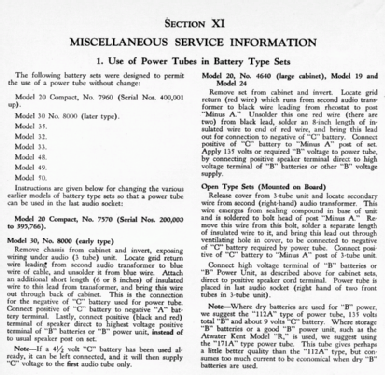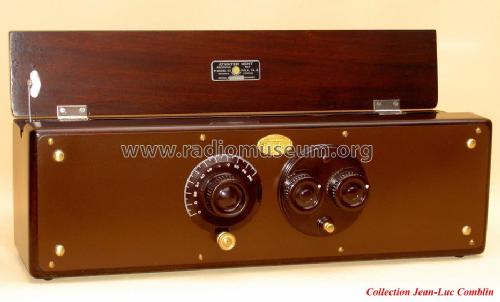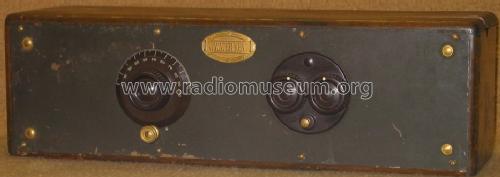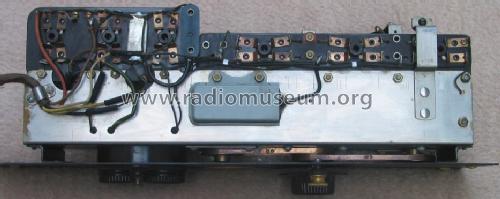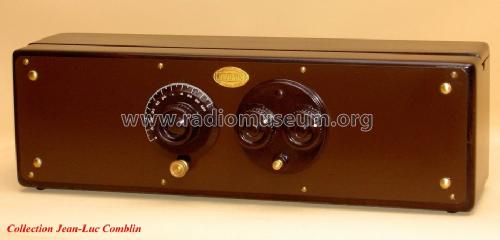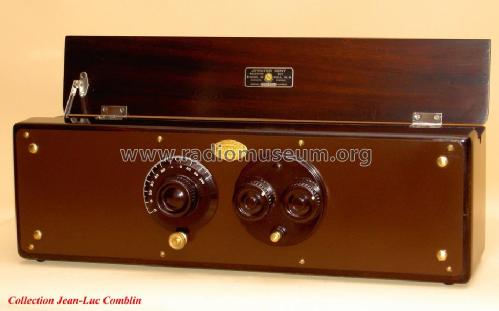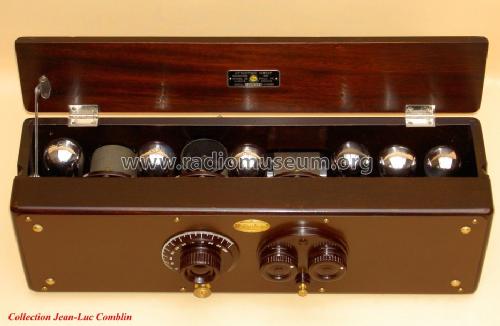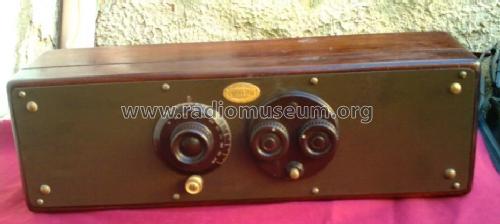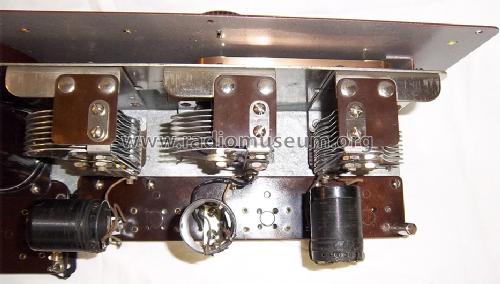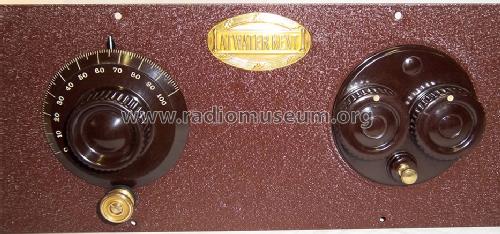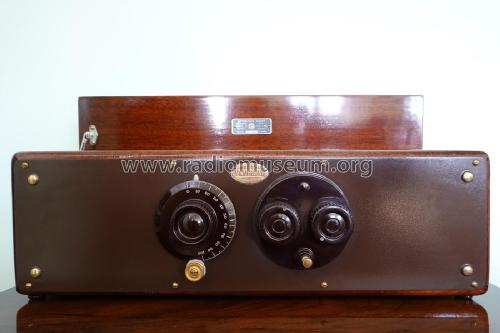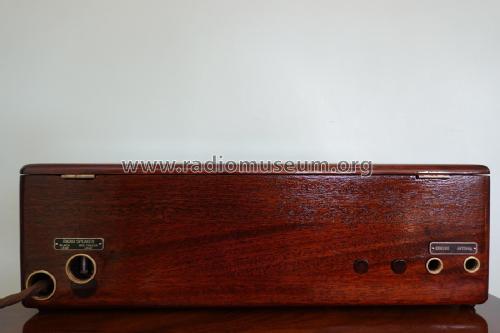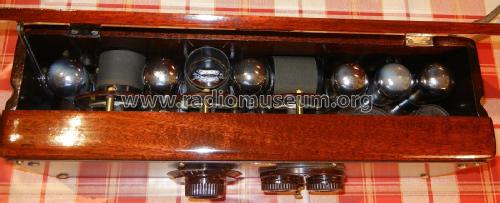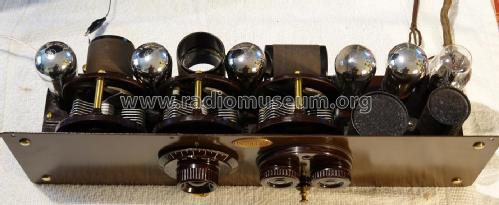8000 Model 30 late, two rheostats
Atwater Kent Mfg. Co.; Philadelphia, USA
- País
- Estados Unidos
- Fabricante / Marca
- Atwater Kent Mfg. Co.; Philadelphia, USA
- Año
- 1926
- Categoría
- Radio - o Sintonizador pasado WW2
- Radiomuseum.org ID
- 74614
Haga clic en la miniatura esquemática para solicitarlo como documento gratuito.
- Numero de valvulas
- 6
- Principio principal
- RFS sin reacción; 2 Etapas de AF
- Número de circuitos sintonía
- 3 Circuíto(s) AM
- Gama de ondas
- OM (onda media) solamente
- Tensión de funcionamiento
- Baterías recargables o pilas
- Altavoz
- - Este modelo usa altavoz exterior (1 o más).
- Material
- Madera
- de Radiomuseum.org
- Modelo: 8000 Model 30 [late, two rheostats] - Atwater Kent Mfg. Co.;
- Forma
- Sobremesa, caja, normalmente con tapa (panel no inclinado).
- Ancho, altura, profundidad
- 502 x 156 x 164 mm / 19.8 x 6.1 x 6.5 inch
- Anotaciones
-
Metal panel and a L-shaped chassis. Single moulded (UX) sockets for the 3 RF stages, and a moulded bakelite panel serving as the chassis for the detector and the two audio stages. This chassis panel also formed the sockets for the three (UX) tubes.
- Peso neto
- 5.6 kg / 12 lb 5.4 oz (12.335 lb)
- Procedencia de los datos
- A.Atwater Kent, The Man, 2002
- Mencionado en
- Radio Manufacturers of the 1920s, Vol 1
- Documentación / Esquemas (2)
- Le Guide du Collectionneur TSF Biraud/Foster, Vol. I (page 102)
- Autor
- Modelo creado por Konrad Birkner † 12.08.2014. Ver en "Modificar Ficha" los participantes posteriores.
- Otros modelos
-
Donde encontrará 508 modelos, 332 con imágenes y 332 con esquemas.
Ir al listado general de Atwater Kent Mfg. Co.; Philadelphia, USA
Colecciones
El modelo 8000 es parte de las colecciones de los siguientes miembros.
Contribuciones en el Foro acerca de este modelo: Atwater Kent Mfg. Co: 8000 Model 30
Hilos: 1 | Mensajes: 1
Receiver sensitivity is around -50 dBm over the broadcasting AM band (525 – 1500 kHz) with more than 10 dB (S+N)/N ratio. Noise level is around -65 dBm.
Compared to the Atwater Kent models 20 and 20C, with similar components, the receiver sensitivity is reduced with at least 10 dB, even if 6 tubes are used instead of 5. The problem is the alignment of the tuning circuits with a single mechanical control. In practice, for a perfect tuning, there are few % variation from a tuning circuit to another, in special in the first stage where a certain antenna tuning is preferable. However, an easier tuning is done with the model 30 than with previous tree dial models.
More details and measurements are presented in the attached pdf file.
Anexos
Serioja Tatu, 22.Dec.24
